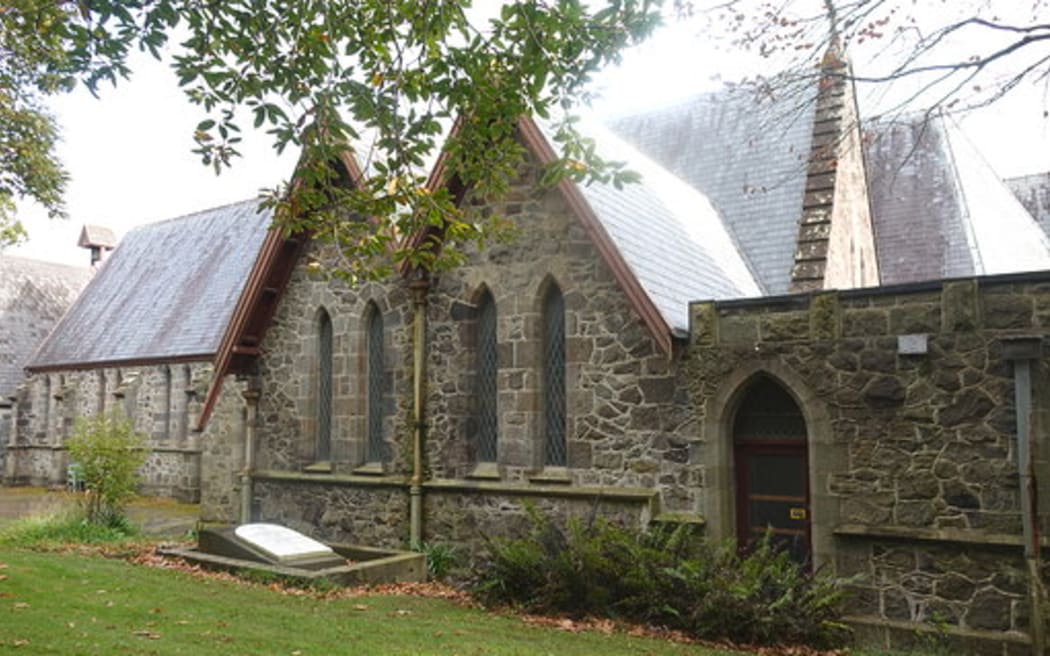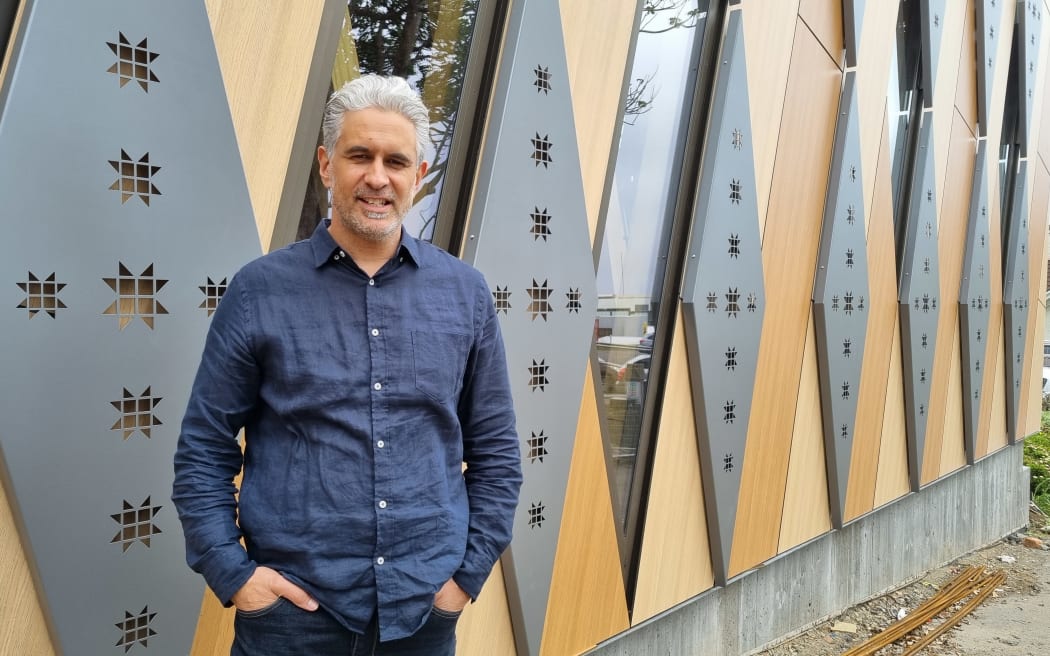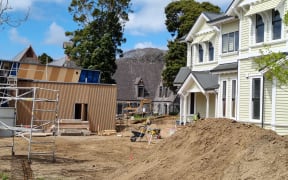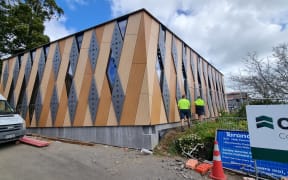
The cathedral, which was consecrated in 2010, has been closed since February 2016 after being identified as an extreme earthquake risk. Photo: RNZ / Robin Martin
Strengthening work will soon start at Taranaki Cathedral - seven years after New Zealand's oldest stone church was closed due to earthquake risk.
Over the next six months, a trial will begin with specialised grout pumped into a section of the central cavity of the southern wall. Steel pins will then be drilled into the wall.
The success of the trial will shape the future work programme and the project's ultimate cost.
Built in 1846 out of local volcanic stone, the Church of St Mary played a pivotal role in the Taranaki Wars of the 1860s. It became the centre of a fortified settlement and gave shelter to Pākehā civilians, while European forces camped on the property.
The grounds are the final resting place of Ngāti Hauā chief Wetini Taiporutu, his son Hemi, Ngāti Apakura chief Whararangi, Ngāti Kōura chief Hakopa and two unnamed chiefs, who were killed at Māhoetahi on 6 November 1860.
A new education centre, Te Whare Hononga, has already been completed, and the colonial vicarage has been relocated and restored as part of the project, which had a budget of $20 million.

Taranaki Cathedral dean Jay Ruka. Photo: RNZ / Robin Martin
This morning, dean Jay Ruka performed karakia, marking the beginning of the final phase of the site redevelopment.
Ruka acknowledged it had been a long wait for investigative work to be completed, allowing the earthquake-strengthening trial to begin.
Fund-raising for the work was continuing and donors could contribute to the cathedral remediation, stained-glass window restoration, or a refit of the church's organ, he said.
Cathedral project manager Jenny Goddard was thrilled to see remediation begin on the historic building, which she described as "a hugely important part of New Plymouth's identity".
Clelands Construction site manager Hoani Russell said stone masons who had used similar techniques in Christchurch would help with the project.
"It is exciting to be involved in such a technical rebuild. Every stone we take out will be numbered so it can be returned to its original position," Russell said.




